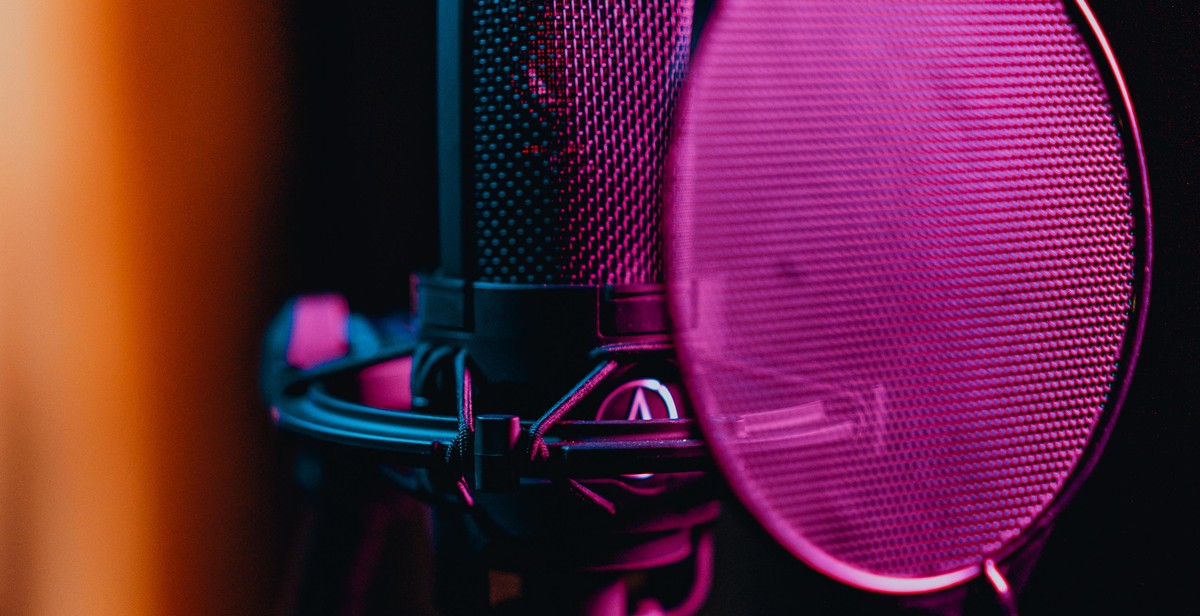How to Write and Record Your Own Music at Home: A Comprehensive Guide
If you’re a budding musician, you’ll know the importance of having a space to create and record your own music. However, renting a studio can be costly and time-consuming, especially if you’re just starting out. That’s where creating your own home studio comes in. With the right equipment and knowledge, you can produce high-quality music from the comfort of your own home.
In this article, we’ll guide you through the process of setting up your own home studio, from choosing the right equipment to recording and editing your tracks. Whether you’re a seasoned musician or just starting out, we’ll provide you with all the information you need to create professional-sounding music at home.
The Benefits of Recording at Home
There are many benefits to recording your own music at home. Firstly, it’s cost-effective. Renting a studio can be expensive, especially if you need to hire an engineer or producer. Secondly, it’s convenient. You can record whenever you want, without having to worry about booking studio time. Finally, it’s a great way to experiment with your music. In a home studio environment, you have complete creative control over your music, which can lead to some exciting and innovative results.
The Equipment You’ll Need
Before you start recording, you’ll need to invest in some equipment. This includes a computer, audio interface, microphone, headphones, and studio monitors. We’ll guide you through the process of choosing the right equipment for your needs, and explain the different options available.

Setting up Your Home Music Recording Studio
Creating a home music recording studio is an exciting and satisfying process, but it requires careful planning and preparation. Here are the essential steps you need to take to ensure your home studio is set up for success.
Choosing the Right Room
The first step in setting up a home music recording studio is selecting the right room. Ideally, you want a space that is quiet, isolated, and has good acoustics. Look for a room that is away from noisy areas of your home, such as the kitchen or living room. Also, consider the size of the room. A larger room may offer more flexibility, but it can be harder to control the acoustics.
Selecting Equipment
Once you have your room selected, it’s time to choose your equipment. This includes a computer or laptop, recording software, audio interface, microphones, headphones, and monitors. Do your research and choose equipment that fits your needs and budget. You don’t need to break the bank to get started, but investing in quality equipment will make a big difference in the quality of your recordings.
Computer or Laptop
Your computer or laptop is the heart of your recording setup. Make sure it has enough processing power and memory to handle your recording software and plugins.
Recording Software
There are many recording software options available, both free and paid. Choose software that is compatible with your computer and fits your recording needs.
Audio Interface
An audio interface is essential for connecting your microphones and instruments to your computer. Look for an interface with multiple inputs and outputs and high-quality preamps.
Microphones
Microphones are crucial for capturing your sound. Consider the type of music you will be recording and choose microphones that are suited for your needs.
Headphones and Monitors
Headphones and monitors allow you to hear your recordings accurately. Invest in quality headphones and monitors to ensure your mixes are balanced and clear.
Acoustic Treatment
Finally, you’ll want to consider the acoustics of your room. Sound reflections and echoes can negatively impact your recordings. Acoustic treatment, such as sound-absorbing panels, bass traps, and diffusers, can help control the acoustics in your room. Start with basic treatment and add more if needed.
With the right room, equipment, and acoustic treatment, you’ll be on your way to creating high-quality recordings in your own home music recording studio.

Writing Your Own Music
Choosing Your Genre
One of the first steps in writing your own music is to decide on the genre you want to create. This can be influenced by your personal taste in music or the style of music you are proficient in playing. It’s important to choose a genre that you are passionate about and that you feel comfortable writing in.
Researching different genres can also be helpful in finding inspiration for your own music. Listen to a variety of music and take note of the elements that make up each genre. This can include the instrumentation, rhythm, lyrics, and overall sound.
Finding Inspiration
Finding inspiration for your music can come from a variety of sources. Some songwriters draw from personal experiences, while others find inspiration in current events or other forms of art. It’s important to keep an open mind and be receptive to inspiration from different sources.
Collaborating with other musicians or songwriters can also be a great way to find inspiration and bounce ideas off of each other. This can lead to new and unique musical creations.
Songwriting Techniques
Once you have chosen your genre and found inspiration, it’s time to start writing your own music. There are many different songwriting techniques that can be used, including:
- Starting with a melody or chord progression
- Writing lyrics first and building the music around them
- Using a hook or catchy phrase as the basis for the song
Experimenting with different techniques can help you find what works best for you and your style of music. It’s also important to remember that songwriting is a process and not every song you write will be a masterpiece. Don’t be afraid to try new things and keep practicing.
| Tip: | Keep a notebook or recording device handy to capture ideas and inspiration as they come to you. |
|---|

Recording Your Music
Now that you have your home studio set up and your instruments tuned, it’s time to start recording your music. Here are some tips and techniques to help you get the best results:
Setting Up Your Equipment
Before you start recording, make sure that all your equipment is set up properly. Check that your microphones are positioned correctly, and that your audio interface is connected to your computer. Make sure that your recording software is set up correctly, and that you have selected the correct inputs and outputs.
It’s also important to make sure that your recording environment is quiet and free from distractions. Turn off any fans or air conditioning units, and close any windows or doors to reduce outside noise. You may also want to consider using soundproofing materials to reduce any echoes or reverberation in your recording space.
Recording Techniques
When it comes to recording your music, there are a few techniques that can help you get the best possible results. Here are some tips:
- Record each instrument separately: This will give you more control over the mix later on, and will allow you to focus on getting the best possible sound for each instrument.
- Use headphones: This will help you hear the details of your performance more clearly, and will also prevent any bleed from one instrument into another.
- Record multiple takes: Don’t be afraid to record multiple takes of each part. This will give you more options to choose from when you come to edit your tracks.
Editing Your Tracks
Once you have recorded your tracks, it’s time to edit them. Here are some tips to help you get the best results:
- Use a digital audio workstation (DAW): A DAW will allow you to edit your tracks with precision, and will also give you access to a range of effects and plugins to enhance your sound.
- Cut out any mistakes: Use the editing tools in your DAW to cut out any mistakes or unwanted noises from your tracks.
- Use effects and plugins: Experiment with different effects and plugins to enhance your sound. EQ, compression, and reverb are all useful tools to help you shape your sound.
| Tip | Technique |
|---|---|
| Record each instrument separately | More control over the mix later on |
| Use headphones | Hear the details of your performance more clearly |
| Record multiple takes | More options to choose from when you come to edit your tracks |
| Use a digital audio workstation (DAW) | Edit your tracks with precision |
| Cut out any mistakes | Use the editing tools in your DAW to remove any unwanted noises from your tracks |
| Use effects and plugins | EQ, compression, and reverb are all useful tools to help you shape your sound |

Mixing and Mastering Your Music
Once you have recorded all your tracks, the next step is to mix and master them. Mixing involves adjusting the levels of each track to create a balanced and cohesive sound. Mastering is the final step in the production process, which involves enhancing the overall sound quality of the mix.
Mixing Your Tracks
When mixing your tracks, you should aim to achieve a balance between all the elements in the mix. This means adjusting the volume levels of each track so that they all sit well together. You can also use EQ, compression, and other effects to enhance the sound of each track and make it fit better in the mix.
It’s important to listen to the mix in different environments to ensure that it sounds good on different speakers and headphones. You should also pay attention to the stereo image and panning of each track to create a sense of width and depth in the mix.
Using reference tracks can also be helpful when mixing. Pick a track that has a similar style or sound to your mix and compare the two. This can help you identify any areas that need improvement and give you a better idea of what your mix should sound like.
Mastering Your Tracks
Mastering is the final step in the production process, which involves enhancing the overall sound quality of the mix. This includes adjusting the levels, EQ, and dynamics of the mix to create a polished and professional sound.
When mastering your tracks, you should aim to achieve a consistent sound across all your tracks. This means ensuring that the volume levels are consistent and that the EQ and dynamics are balanced. You can also use stereo imaging and other effects to enhance the overall sound of the mix.
It’s important to listen to the mastered tracks in different environments to ensure that they sound good on different speakers and headphones. You should also make sure that the tracks are properly labeled and formatted for distribution.
Conclusion
Mixing and mastering your tracks can be a challenging process, but it’s an essential step in producing high-quality music. By following these tips and techniques, you can create a well-balanced and polished mix that sounds great on any system.

Conclusion
Writing and recording your own music at home has never been easier. With the right equipment and a little bit of knowledge, you can create professional-quality tracks from the comfort of your own home. Whether you’re a seasoned musician or just starting out, there are plenty of resources available to help you along the way.
Tips for Success
Here are some tips to keep in mind as you embark on your journey to create your own music:
- Invest in quality equipment
- Take the time to learn the software and tools you’re using
- Practice, practice, practice
- Don’t be afraid to experiment with different sounds and styles
- Collaborate with other musicians to learn and grow
Final Thoughts
Writing and recording your own music can be a rewarding and fulfilling experience. Whether you’re doing it for fun or pursuing a career in the music industry, the possibilities are endless. So, grab your guitar, keyboard, or microphone, and start creating!
| Author: | John Smith |
| Date: | June 1, 2021 |
| Category: | Music Production |
